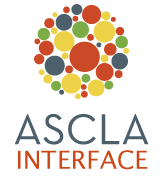by Carol Ann Desch, ASCLA President, New York State Library
ASCLA Leadership met at the Midwinter meeting in Denver on Saturday morning to discuss trends in the profession and new ideas, directions and opportunities for the Division. Roundtable discussions facilitated by Ann Joslin, State Librarian, Idaho Commission for Libraries launched ASCLA’s planning efforts. Timing could not have been better, as ALA is also beginning its work to develop a new 2015 strategic plan.
Some forty ASCLA leaders representing the ASCLA Board, committees, task forces, assemblies, sections, discussion groups, forums, liaisons, the Interface Editor, and ASCLA staff participated. Discussion groups were ably led by Brenda Bailey-Hainer, Marti Goddard and Diana Reese. Facilitator Ann Joslin asked each group to address several specific questions:
- What overarching trends most affect ASCLA members’ libraries?
- How can ASCLA better serve ASCLA members and library leaders?
- What new activities should ASCLA consider?
- Should ASCLA have a different organizational structure? Should ASCLA have a new name?
Listed below is a sampling of trends ASCLA leaders identified as impacting ASCLA, ASCLA members and the libraries, cooperatives, institutions and other organizations in which they work.
Overarching Trends That Will Impact ASCLA Members and Library Organizations
Increased need for highly skilled library staff and consultants
- Loss of staff expertise and experience through retirements, attrition and hiring freezes.
- More training and professional development for staff at all levels.
- Critical need for good succession planning and cross-training.
- Library organizations will need expert consultants with special/unique experience to fill the gaps.
New organizational models
- Budget cuts, fewer resources, increased demands, new opportunities and roles.
- Library organizations will need to refine or redefine core services and missions.
- Boom in consortia and consolidation of consortia for automation, resource sharing (via social networking as well).
- Migration to new models for cooperation.
- Learning to “plan well” with other kinds of partners (historical societies, archives, museums, etc.) that are in new consortia.
Growing demands for library services and collections
- Growing circulation, more visitors and users
- More people seeking job search resources and assistance
- Increase in services for the aging population
- Increasing immigrant populations
- More people with learning disabilities seeking appropriate materials and services (also people on the autism spectrum)
- Users requesting more and more materials in a variety of non-print formats (audio books, DVDs, downloadable audio, video and print).
- Need more services for ex-offenders/prison releases as there will be fewer services provided by other agencies
Keeping Pace with New Technologies
- Increasing computer use and increasing demand for more broadband
- Need for more online and electronic services and content
- Need for more outreach through online formats (social networking) for people of all ages
- Need for assistive technology for people with a variety of disabilities and for people of all ages
I invite you to email me at cdesch@mail.nysed.gov with any additional trends you think should be on this list. What did we overlook? ASCLA Leadership welcomes your candid thoughts and creative ideas for shaping ASCLA’s future.
And remember, our ASCLA staff is always available to help you. Please don’t hesitate to email or call if you have questions or suggestions about ASCLA at 1-800-545-2433, ext. 4398.
For more information contact Carol Ann Desch at cdesch@mail.nysed.gov or at 518-474-7196. New York State Library, Albany, NY 12230.
